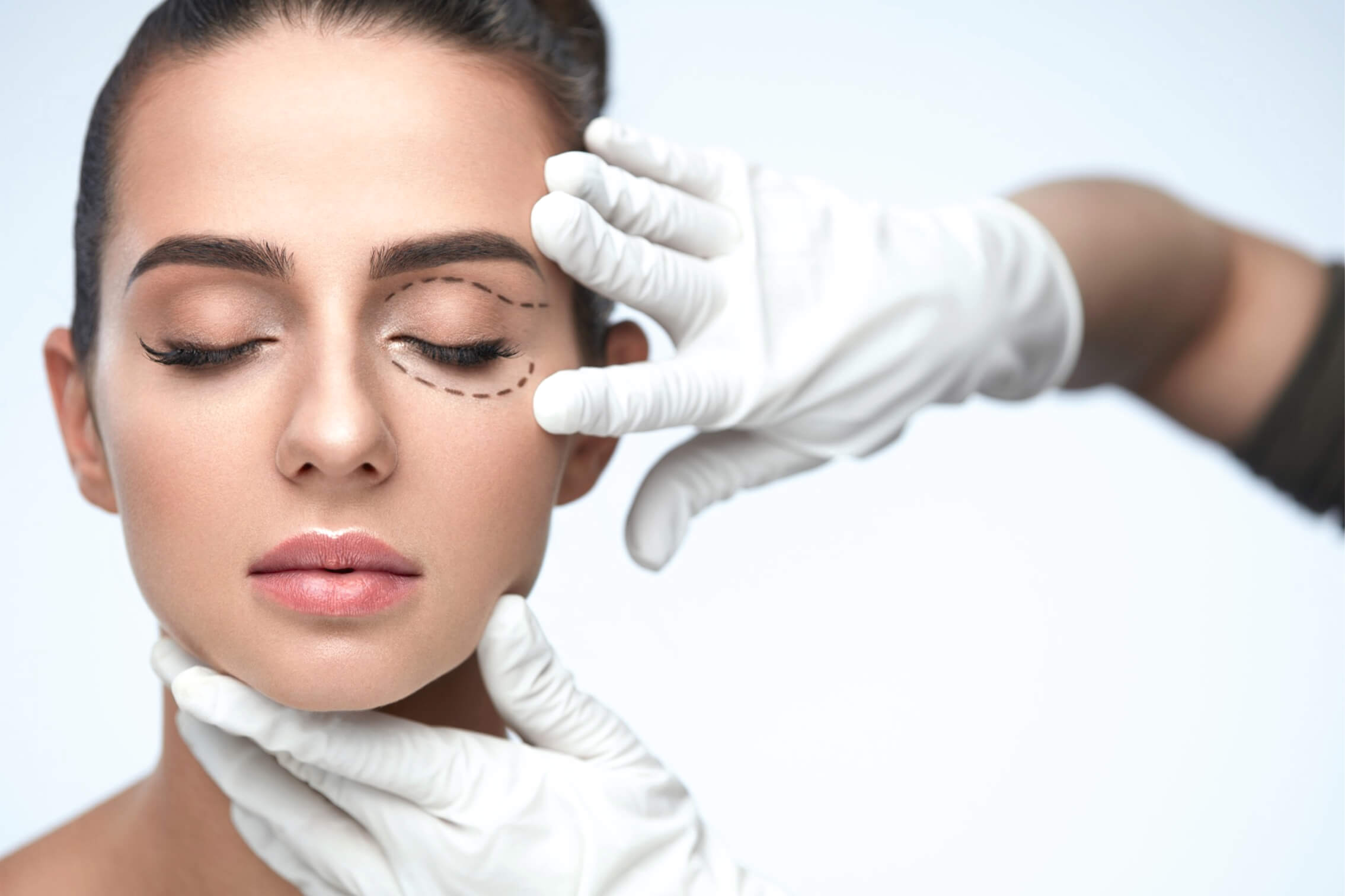
Blepharoplasty
The eyelid skin has the thinnest skin in the body and is the least resistant to aging. The thin skin of the eyelid and the thin muscle layer just below it cannot prevent the fatty tissues settled deeper with aging from sagging out and down. The relaxation of the eyelid skin and muscles results in wrinkles and the settling of fat tissue that give the patient a tired appearance. Blepharoplasty is eyelid surgery performed to correct the appearance and/or function of the eyelids.
In Which Situations Is Eyelid Surgery Performed?
Eyelid surgery is the process of removing excess skin and fat tissue from the lower and upper eyelids and fixing the sagging tissues in the correct positions. With eyelid surgery, the sagging upper eyelid can be lifted and the swollen eye bags under the eyes can be reduced. As a result, eyelid surgery dramatically corrects the tired and old appearance as well as sagging and gives a rejuvenated appearance around the eyes. It allows patients to have a sharper and more impressive gaze like when they were young. In addition to the cosmetic results, this operation can also be performed to eliminate the reduced visual field due to sagging in the upper eyelid or to prevent diseases such as eye dryness, infections and red eyes due to sagging in the lower eyelid. This procedure can be performed alone or in conjunction with other facial plastic surgeries such as eyebrow lift and facelift to obtain more effective results.
Preparation before Blepharoplasty
During the interviews, your doctor will determine your expectations and provide detailed information about the surgical technique and its results, examine your medical history comprehensively to decide whether you are healthy enough for surgery, as well as ask questions about your general health status such as high blood pressure, diabetes, bleeding disorders, and wound healing properties. He will also ask questions about your field of vision, tear problems, use of contact lenses, and your expectations from the surgery. It is also important to inform your doctor about any previous surgeries, especially surgeries regarding the eyelids.
In the weeks before surgery, aspirin, other drugs like aspirin, ibuprofen or other non-steroidal anti-inflammatory drugs, gingko biloba, herbal medicines and vitamin E supplements should all be avoided, and daily medications should be continued as long as your doctor deems it appropriate. Unless otherwise stated, you should not eat or drink anything after midnight before the surgery, avoid taking showers, washing your eyebrows with shampoo or using make-up. You should leave false eyelashes, contact lenses, jewellery and other unnecessary accessories at home.
How is Blepharoplasty Performed?
Blepharoplasty surgery can be performed under local anaesthesia or general anaesthesia with or without mild sedation. This procedure can be done as an outpatient service in the clinic or hospital. Although the procedure is painless, there may be mild discomfort throughout the procedure. If your surgeon chooses general anaesthesia for you, you will sleep throughout the procedure. The entire procedure takes approximately two hours, depending on the amount of work done on the four eyelids including upper or lower eyelids. The surgeon often makes the skin incision along the natural wrinkle line for the upper eyelid and under the eyelashes for the lower eyelid. This incision can be made with a traditional scalpel or laser. The incision of the upper eyelid extends from the upper inner corner of your eyelid to the wrinkle area on the outer part of your eyes. The surgeon will remove excess skin, muscle and fat tissue, which is necessary to achieve the desired result. The incision is closed using small, absorbable stitches or stitches that can be removed within a week. If the lower eyelid is operated, the oil bags here are removed by making a small incision only on the inner part of the lower eyelid, without creating a scar on the skin.
Recovery Process After Blepharoplasty
Hospitalisation may or may not be necessary following eyelid surgery. The best environment for recovery will be determined by the preferences of the doctor and patient. Recovery varies from patient to patient. In the first days after the procedure, redness and swelling develop around the incision line. Usually, in the first ten days, the rash fades and the swelling goes down. In the first days following the surgery, a cold compress should be applied to reduce swelling. Swelling and bruises can be reduced by keeping the head up. After surgery, the surgeon will apply ointment to your eyes and stitches. During the first day of recovery, eye drops can be used to help keep the eyes from drying and the incisions are moistened with ointment. Stitches are removed after 3 to 7 days. In the first week after the operation, activities such as reading books, using computers and watching television should be avoided. Usually around the 10th day of recovery, patients feel well enough to do their normal activities. Heavy activities should be avoided for three weeks.
| 2. Floor | Eastern Block |
| Department of Polyclinics | |
| Monday - Sunday | 8:00 - 17:00 |
| Saturday | Closed |
| Sunday | Closed |